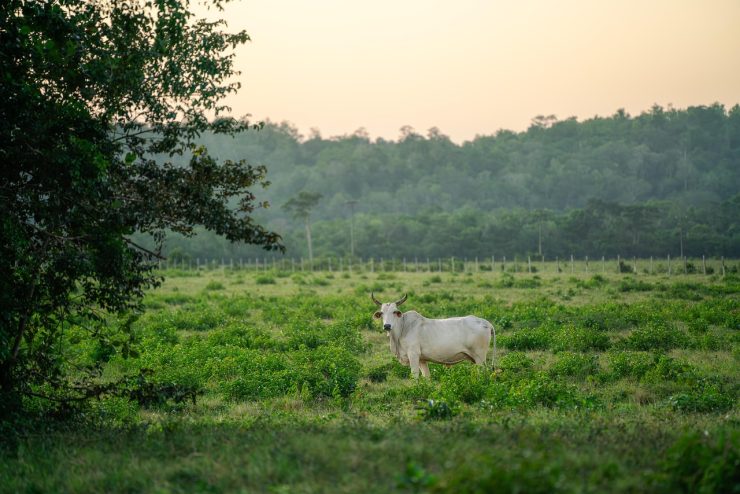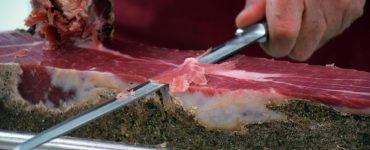The majority of chicken and pork in the U.S. are raised in large-scale indoor operations, where the animals never see sunlight or breathe fresh air. Their diets typically consist entirely of grains and soy. As a result, chicken and pork tend to have very high levels of omega-6 linoleic acid—around 18 to 20%.
This matters because most people already consume far too much omega-6—about 8 to 10 times the amount needed—which is strongly linked to inflammation and degenerative diseases like heart disease, diabetes, cancer, and Alzheimer’s.
In comparison, even the most conventionally raised, grain-finished beef contains only about 2 to 3% omega-6 fats. That means chicken and pork have 7 to 10 times more inflammatory omega-6 than beef. When it comes to fat composition, beef clearly comes out ahead.
Beef fat is also rich in stearic acid, a type of healthy saturated fat that helps reduce appetite and promote fat loss—especially around the abdomen. One study found that rats fed stearic acid lost significant abdominal fat, while those consuming more omega-6 fats gained weight.
Beef is also more nutrient-dense, with about 25 to 30% more vitamins and minerals than chicken or pork. This nutritional edge likely comes from the fact that cattle eat a more varied and natural diet for most of their lives. Cattle also live outdoors in fresh air and sunshine and graze on pasture for 80 to 85% of their lives, even if finished on feedlots.
Unlike chickens and pigs—who typically live their entire lives in indoor factory farms—cattle benefit from a more humane and natural existence. For a deeper dive into the beef industry, “Defending Beef” by former vegetarian-turned-rancher Nicolette Hahn Niman is a great read.
Grass-finished beef is ideal from both a nutritional and environmental perspective. However, even conventional beef is a better choice than chicken or pork when it comes to health and sustainability.
Feedlot-finished beef still comes from cattle raised outdoors. Feed rations at finishing feedlots usually contain only about 40 to 50% grain; the rest is made up of hay, alfalfa, and plant materials that humans can’t digest but cattle can transform into nutrient-rich meat.
The same nutritional and environmental benefits of beef also apply to other ruminant meats like bison, lamb, elk, deer, and yak. These animals are typically raised on land that isn’t suitable for crops—too rocky, dry, or steep—so they convert otherwise unusable land into highly nutritious food.
From an ecological standpoint, rotational grazing of ruminants is the most sustainable form of farming. Unlike monocrop agriculture, which depletes soil, contaminates water, and harms wildlife, regenerative grazing protects biodiversity, improves soil health, and even captures carbon from the atmosphere.
Well-managed pasture systems can be carbon-negative. One standout example is White Oak Pastures in Georgia, where soil carbon levels have increased tenfold over the last 20 years thanks to regenerative grazing practices.
Grass-fed beef supports not only human health but also ecological health. Farms like Polyface in Virginia, Roam Ranch in Texas, and others are proving that regenerative meat production can reverse environmental damage while producing nutrient-rich food.
Bees, too, benefit from diverse pasture systems. Monocrop fields—whether soy, corn, or wheat—offer no diversity for pollinators and rely heavily on pesticides. In contrast, pastures are full of flowering plants and free from synthetic chemicals, making them safe havens for bees and other pollinators.
Contrary to popular belief, avoiding meat isn’t always the most eco-friendly choice. Supporting grass-fed and regeneratively raised meat is one of the best ways to improve both human and planetary health.











